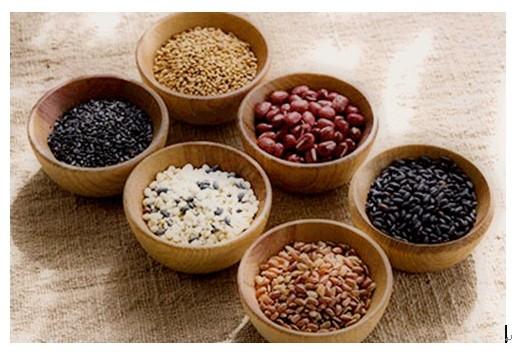- 本文目录导读:
- Understanding Coarse and Fine Foods
- The Benefits of Coarse Foods
- The Role of Fine Foods
- Balancing Coarse and Fine Foods
- Case Studies and Practical Examples
- Conclusion
Maintaining a balanced diet is a fundamental aspect of a healthy lifestyle. This concept extends beyond simply eating the right amounts of food groups; it also involves integrating a variety of textures and types of foods into our meals. One important principle in nutrition is the balance between coarse and fine foods. This practice, often overlooked, can have significant benefits for our overall well-being. In this article, we will explore the concept of coarse and fine foods, their individual benefits, and how their combination can contribute to a more effective and holistic approach to nutrition and health.
Understanding Coarse and Fine Foods
Before diving into the benefits, it is essential to understand what is meant by coarse and fine foods. Coarse foods are those that have a rougher texture and are typically less processed. These include whole grains, vegetables, legumes, nuts, and seeds. Fine foods, on the other hand, are those with a smoother texture and are often more processed. Examples include refined grains like white rice and white bread, as well as certain processed foods.
The Benefits of Coarse Foods
Coarse foods are rich in dietary fiber, which plays a crucial role in digestive health. Fiber helps to regulate bowel movements, preventing constipation and promoting a healthy digestive system. Additionally, coarse foods often have a lower glycemic index compared to their fine counterparts. This means they cause a slower rise in blood sugar levels, which is beneficial for managing blood sugar levels and preventing spikes that can lead to conditions like diabetes.
Furthermore, coarse foods are typically higher in essential nutrients, such as vitamins, minerals, and antioxidants. Whole grains, for example, contain more B vitamins, iron, and magnesium than refined grains. Vegetables and legumes provide a wealth of vitamins A, C, and K, as well as folate and potassium. The rough texture of coarse foods also means they take longer to chew and digest, leading to increased satiety and better weight management.
The Role of Fine Foods
While coarse foods are incredibly beneficial, fine foods also have their place in a balanced diet. Fine foods are often easier to digest and can be more palatable for those who have difficulty consuming coarse foods due to dental issues, digestive disorders, or other health conditions. Additionally, fine foods can provide a quick source of energy, which is particularly useful in situations where the body requires immediate fuel, such as during intense physical activity.
Fine foods can also be fortified with additional nutrients. For instance, refined grains are often enriched with vitamins and minerals that may have been lost during processing. This fortification can help address specific nutritional deficiencies in certain populations.
Balancing Coarse and Fine Foods
The key to reaping the benefits of both coarse and fine foods lies in achieving a balance between the two. A diet that includes a variety of textures and types of foods can provide a more comprehensive range of nutrients and health benefits. Here are some practical tips for integrating coarse and fine foods into your daily diet:
1. **Start with Breakfast**: Incorporate whole grains such as oatmeal or whole grain cereals for breakfast. If you prefer smoother textures, try a blend of whole grain and refined cereals.

2. **Mix Grains**: When preparing meals, mix whole grains with refined grains. For example, combine brown rice with white rice or whole wheat pasta with regular pasta. This approach allows you to enjoy the benefits of both types of grains.
3. **Vegetable Variety**: Include a mix of coarse and fine vegetables in your meals. For instance, pair crunchy raw vegetables like carrots and bell peppers with softer, cooked vegetables like zucchini and tomatoes.
4. **Healthy Snacks**: Choose snacks that offer a balance of textures, such as a mix of nuts and dried fruit or whole grain crackers with cheese.
5. **Mindful Preparation**: When cooking, aim to retain the natural textures of foods as much as possible. Avoid over-processing or overcooking vegetables and grains to preserve their coarse qualities.
6. **Experiment with Recipes**: Explore recipes that incorporate both coarse and fine ingredients. For example, add finely chopped nuts to a smooth yogurt or blend coarse vegetables into a creamy soup.
Case Studies and Practical Examples
To illustrate the benefits of balancing coarse and fine foods, let’s consider a few practical examples:

**Example 1: A Balanced Breakfast**
A balanced breakfast might include a bowl of oatmeal topped with fresh fruits and nuts. The oatmeal provides a coarse texture rich in fiber, while the fruits add a variety of vitamins and antioxidants. Nuts contribute healthy fats and additional fiber. For those who prefer a smoother texture, blending the fruits into a smoothie to accompany the oatmeal can be an excellent option.
**Example 2: A Nutritious Lunch**
For lunch, a mixed grain salad made with quinoa, brown rice, and finely chopped vegetables like cucumber, tomatoes, and bell peppers can be both satisfying and nutritious. The combination of coarse and fine ingredients ensures a variety of textures and nutrients. Adding a protein source like grilled chicken or tofu enhances the meal’s nutritional profile.
**Example 3: A Wholesome Dinner**
A dinner featuring a mix of coarse and fine foods might include a vegetable stir-fry with a variety of textures. Pairing this with a side of mixed grain pilaf and a smooth, creamy soup can create a well-rounded meal. The stir-fry provides a crunch from the vegetables, while the pilaf offers a blend of grains. The soup adds a comforting, easy-to-digest component to the meal.

Conclusion
Achieving optimal health through a balanced diet involves more than just the right proportions of macronutrients. It requires a thoughtful approach to the textures and types of foods we consume. By integrating both coarse and fine foods into our meals, we can benefit from a wider range of nutrients, improved digestive health, better blood sugar management, and enhanced satiety. This balanced approach not only supports physical well-being but also contributes to a more enjoyable and varied eating experience.
Incorporating the principle of coarse and fine food balance into your dietary habits is a practical and effective way to enhance your overall health. As with any nutritional advice, it is essential to consider individual needs and preferences, and consulting with a healthcare professional or nutritionist can provide personalized guidance.
Ultimately, the goal is to create a sustainable and enjoyable eating pattern that supports long-term health and well-being.
转载请注明:成都会所桑拿-四川成都休闲桑拿推荐论坛! » 武汉桑拿 » Achieving Optimal Health Through a Balanced Diet: The Importance of Integrating Coarse and Fine Foods
版权声明
本文仅代表作者观点,不代表成都休闲网立场。
本文系作者授权发表,未经许可,不得转载。
























